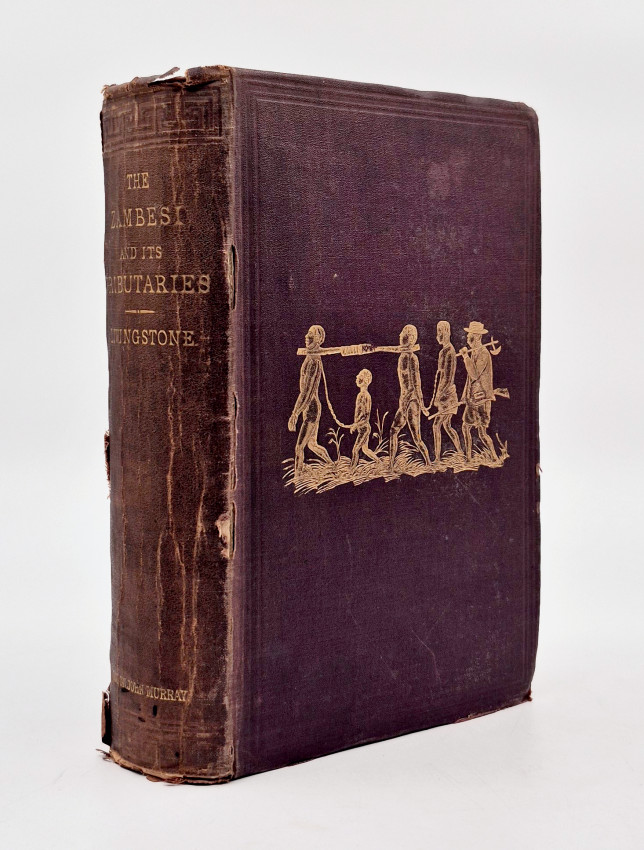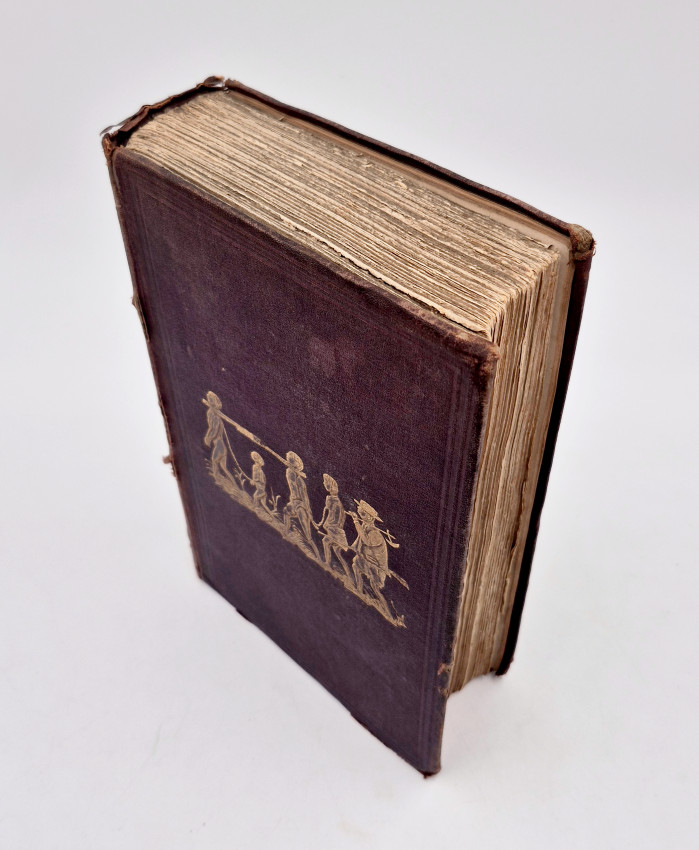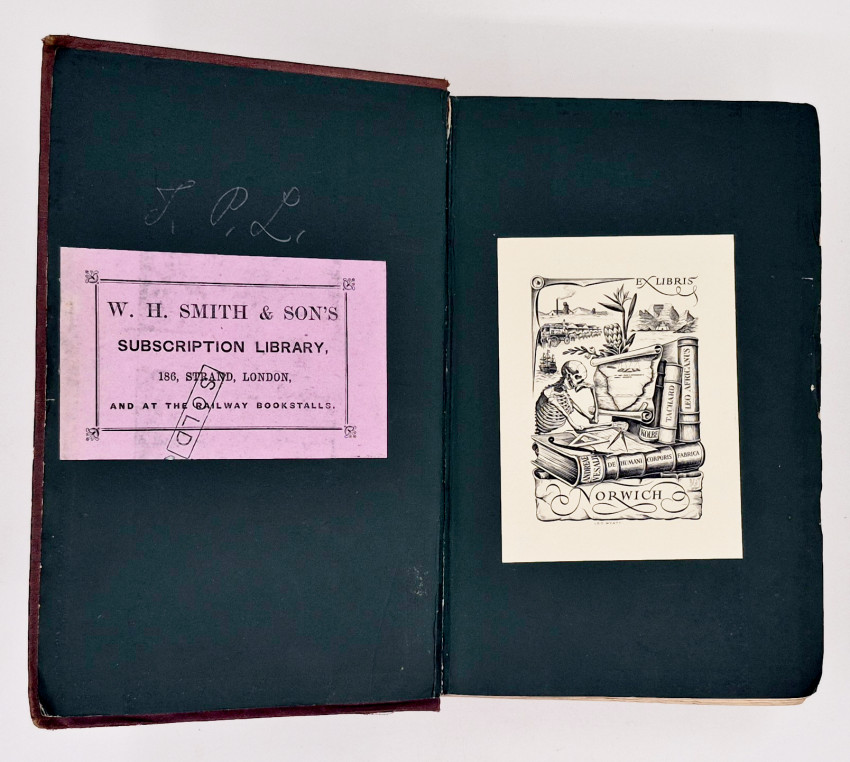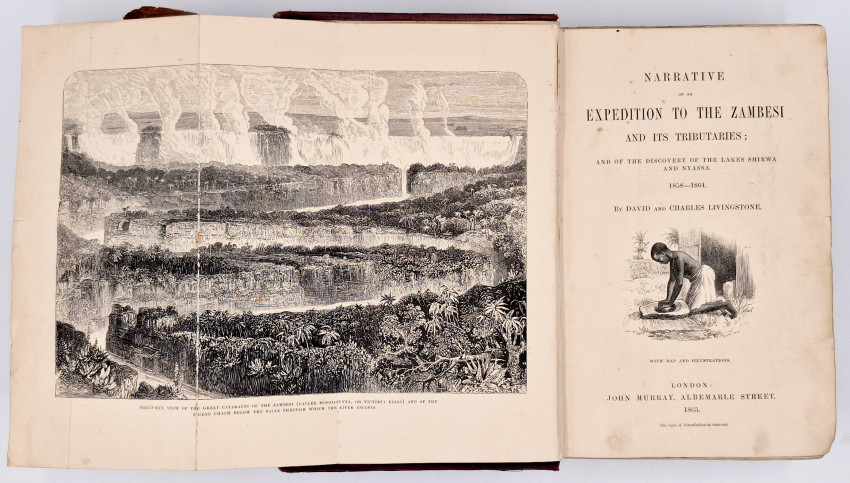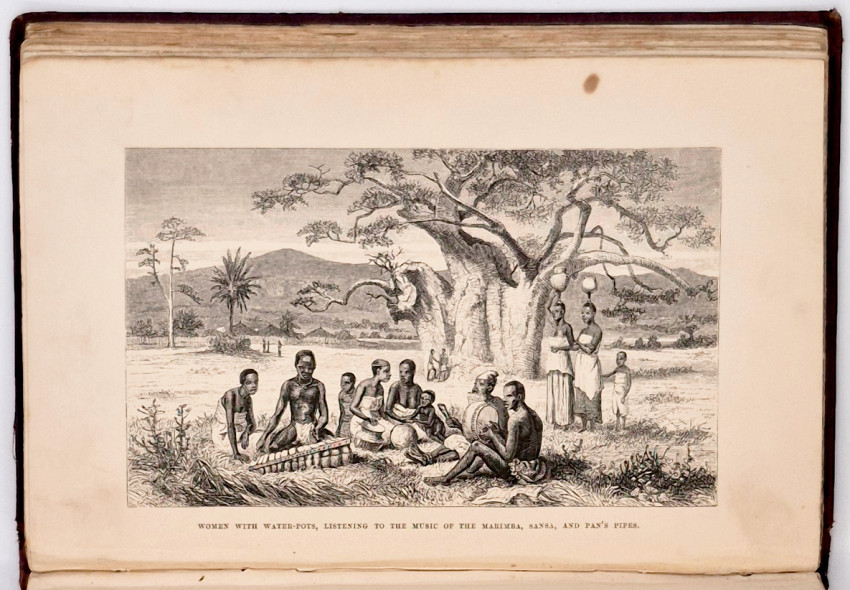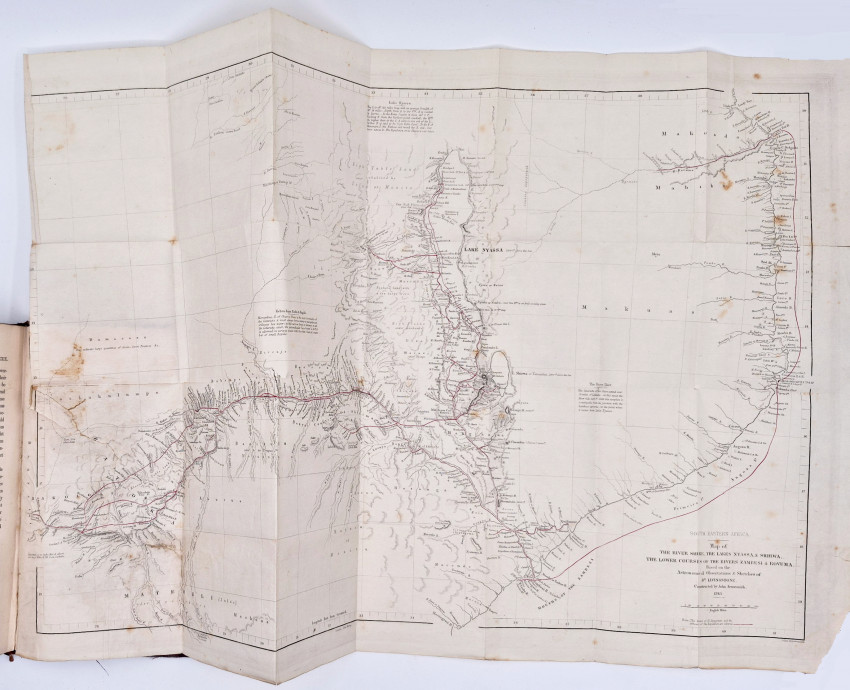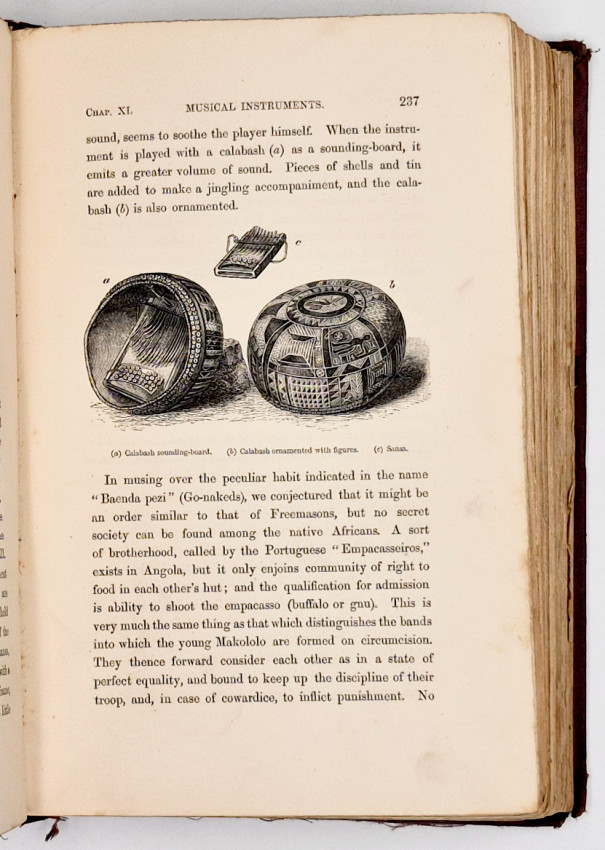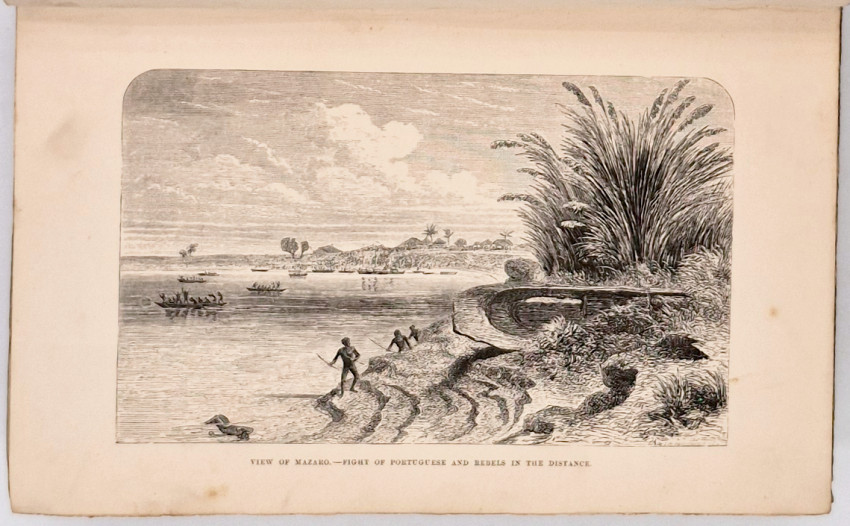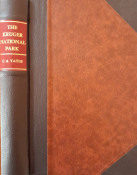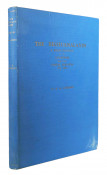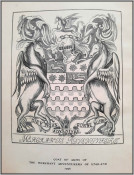First edition: 608 pages, wood engraved folding frontispiece - A Bird's Eye View of the Great Cataracts of the Zambezi (called Mosioatunya, or Victoria Falls) - tears at the fore edge and the first fold, title page vignette, 12 plates and numerous illustrations, large folding map with the expedition's route coloured in red - foxed, frayed at the fore edge and torn at the hinge which has been simply repaired, uncut fore edge and bottom edge, original maroon cloth with gilt vignette of slaves on the upper cover - spine worn and frayed, titled gilt on the spine, original black endpapers intact with the binder's ticket of Edmonds & Remnants on the rear paste-down endpaper, with the bookplate of W.H. Smith & Sons, Subscription Library, 186 Strand, London on the front paste-down endpaper and another bookplate on the free endpaper, a good ex-lending library copy.
Mendelssohn (Sidney) South African Bibliography volume 1, page 915-6: 'n the year 1857, David Livingstone severed his connection with the London Missionary Society, on the most friendly terms with that institution, and accepted the position of H.M.S. Consul at Quilimane, at the same time taking the leadership of the " Zambesi Expedition," which was fitted out by the British Government, " to extend the knowledge already attained of the geography and mineral and agricultural resources of Eastern and Central Africa."
'The first object of research was the river Zambesi, its mouths and tributaries, with a view of discovering a serviceable water-highway into the interior, and the Kongone being ascertained to be the best of the mouths, the river was ascended in a small steam launch which had been brought in sections on the Pearl, which soon after returned home. On his arrival at Tete, Dr. Livingstone was greeted with much joy by the Makalolos, whom he had left there during his absence in England, and whom he eventually took back to their homes. In the course of the exploration of the Shire River, Lake Shirwa was discovered, on April 18, 1859, an( l on September 16 he arrived at Lake Nyassa about two months before Dr. Roscher reached it.
'The Portuguese asserted, however, that Livingstone had not discovered the lake, and endeavoured to prove that they had known of its existence previously, but it appears that their object in making this statement was to make good their claim to the country. The launch, Ma Robert, was found to be a most unserviceable steamer, and eventually Dr. Livingstone had to send the engineer, Mr. Rae, to England, to have another boat built. In the meantime he revisited the Victoria Falls, taking his faithful Makololos back to their country, where they were received by their chief Sekeletu ; the expedition remained for about a month at Shesheke, returning to Tete on September 17, 1860. A few weeks later, the new boat {The Pioneer) arrived, and Bishop Mackenzie accompanied the party on a short exploring voyage up the Rovuma, after which they returned to the Zambesi, and, proceeding up the river, entered the Shire. Returning to the Zambesi, Livingstone met his wife; but about the middle of April, Mrs. Livingstone fell ill with fever, and died on April 27, at Shupanga.
'The exploration of the Rovuma was recommenced with the new steamer, and Livingstone returned to the Zambesi in the beginning of the year 1863, but on the 19th of May Charles Livingstone and Dr. Kirk, who had been seriously ill, returned to England, and soon after Earl Russell recalled the expedition.'
Livingstone’s Life & Expeditions (https://livingstoneonline.org/life-and-times/livingstone-s-life-expeditions) The Zambezi Expedition (1858-64)
'The original plan was to reach the Zambezi delta, travel to the Batoka highlands, and from there explore the area and catalogue its natural resources (Dritsas 2010:11). The expedition, however, faced difficulties from the start. Relations among the group were strained, in part due to Livingstone’s shortcomings as a leader: several members either resigned from the expedition or found themselves dismissed. After investing such hopes in the Zambezi, there was considerable disappointment when further investigation of the Cabora Bassa rapids proved them to be impassable...
'However, the mission became embroiled in tumultuous local politics (Roberts 2004). Many of the members also suffered from illness and died of fever. Following the death of the mission’s leader, Bishop Charles Mackenzie, the mission was withdrawn much to Livingstone’s disappointment. Likewise, a mission to the Makololo sent out by the LMS at Livingstone’s encouragement also ended in disaster and the deaths of almost the entire party.
'The tragedy during the expedition, moreover, was personal for Livingstone. His wife, Mary, had come out to join him in 1862, but died shortly afterwards at Shupanga. In July 1863, the expedition was recalled to Britain. After a short excursion to the area west of Lake Nyassa, Livingstone began to return home. In a daring journey, he sailed his boat, the Lady Nyassa, across the Indian Ocean to Bombay, before boarding a ship to Britain.
'In light of the many difficulties, it is no surprise that the Zambezi Expedition has often been deemed a failure: it certainly failed to meet the tremendous expectations of many supporters at home. Yet this reputation has obscured the fact as a scientific expedition – understood as “an aggregate of projects” with a range of objectives and aspirations – it had some profitable results and various important botanical and zoological specimens were returned to Kew Gardens and the Natural History Museum.'
- Overall Condition: A good ex-lending library copy
- Size: 8vo (220 x140mm)

